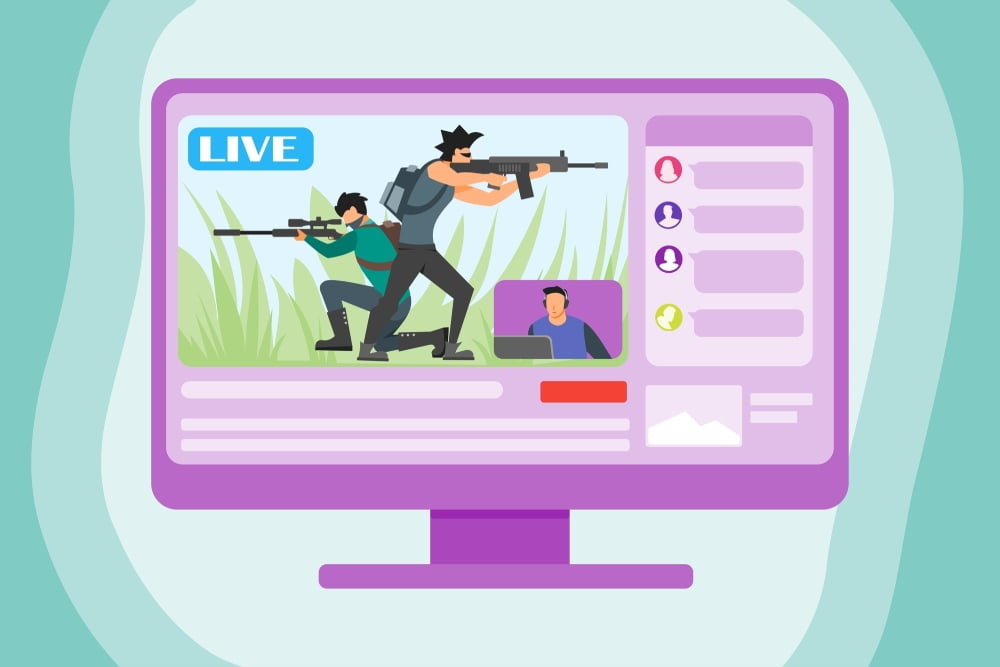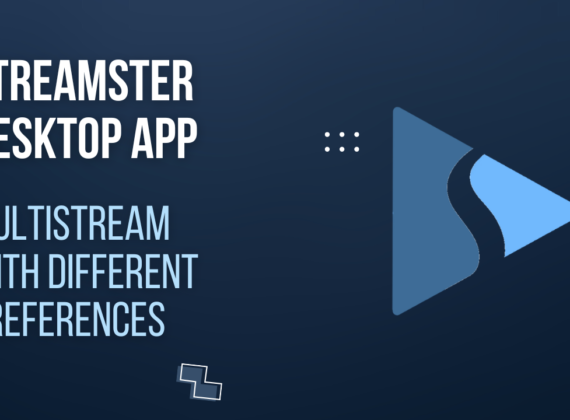YouTube + Facebook + Twitch + Kick: Livestream Requirements and How to Deal With Them While Multistreaming
YouTube + Facebook + Twitch + Kick: Livestream Requirements and How to Deal With Them While Multistreaming
From social media to live streaming services and video-sharing platforms, each online medium has its own unique set of requirements for hosting and delivering videos. As content creators and businesses strive to reach wider audiences, understanding these varied video requirements becomes essential to ensure an optimal streaming experience. While trying to ensure the maximum quality of the live stream, content creators should remember that each platform has its own limitations on maximum allowed resolution, FPS, or bitrate.

Multistream with Streamster
Live stream requirements on YouTube
The maximum live streaming requirements on YouTube were as follows:
Resolution. YouTube allows live streaming in various resolutions, including 720p (HD), 1080p (Full HD), and even 4K (Ultra HD), depending on the channel’s eligibility and the viewer’s device capabilities.
Frame Rate. YouTube supports live streaming at different frame rates, such as 30 frames per second (fps) and 60 fps. Higher frame rates provide smoother motion but require more bandwidth.
Bitrate. The maximum allowed bitrate for live streaming on YouTube depends on the selected resolution and frame rate. Generally, it ranges from around 4 Mbps for 720p at 30fps to 50 Mbps or more for 4K at 60fps.
Audio. YouTube typically supports stereo or multi-channel audio for live streams. The specific audio bit rate may vary, but it is generally around 128-256 kbps.
Encoder Settings. To broadcast a live stream on YouTube, content creators often use encoding software or hardware to compress and transmit their video and audio. YouTube supports various encoding software and hardware, including popular options like OBS (Open Broadcaster Software) and Streamster.
It’s essential to keep in mind that YouTube’s live streaming requirements and supported settings may change over time as the platform evolves and technology advances. If you’re planning a live stream, it’s best to refer to YouTube’s official guidelines or documentation for the most up-to-date information on their streaming requirements.
Live stream requirements on Facebook Live
The maximum live streaming requirements on Facebook Live were as follows:
Resolution. Facebook Live supports various resolutions for live streaming, including 1080p (Full HD), 720p (HD), and lower resolutions. Higher resolutions are not supported. The available options may depend on your device and network conditions.
Frame Rate. Facebook Live allows streaming at different frame rates, typically including 30 frames per second (fps) and 60 fps. Higher frame rates may provide smoother motion, but it may require more bandwidth and processing power.
Bitrate. The maximum allowed bitrate for Facebook Live streaming depends on the selected resolution and frame rate. For example, a common range might be 2-4 Mbps for 720p at 30fps and 4-6 Mbps for 1080p at 30fps. The maximum allowed bitrate on Facebook Live is 15000 Kbps.
Audio. Facebook Live typically supports stereo or mono audio streaming. The audio bit rate may vary, but it is generally around 128-256 kbps for stereo audio.
Encoder Settings. To broadcast a live stream on Facebook Live, you can use various encoding software and hardware. Facebook supports a range of popular encoding options, including OBS (Open Broadcaster Software) and Streamster.
As with any online platform, it’s crucial to check Facebook’s official documentation or guidelines for the most up-to-date information on their live streaming requirements and supported settings. Keep in mind that these specifications may evolve over time as the platform advances and adapts to changing technology and user needs, so we recommend checking official guides of the platform to have up-to-date information.
Live stream requirements on Twitch
The maximum live streaming requirements on Twitch.tv (commonly referred to as Twitch) were as follows:
Resolution. Twitch allows live streaming in various resolutions, including 720p (HD) and 1080p (Full HD). The available options depend on your channel’s eligibility, your broadcasting software, and the viewer’s internet connection.
Frame Rate. Twitch supports live streaming at different frame rates, including 30 frames per second (fps) and 60 frames per second (fps). Like the resolution, the supported frame rates can vary depending on your setup and the viewer’s capabilities.
Bitrate. The maximum allowed bitrate for Twitch streaming depends on your account’s status (regular user or Twitch Partner) and your channel’s viewership. For non-partnered streamers, the maximum bitrate is generally around 6 Mbps, while Twitch Partners may have higher bitrate options.
Audio. Twitch typically supports stereo or mono audio streaming. The audio bit rate can vary but is usually around 96-160 kbps for stereo audio.
Encoder Settings. Twitch is compatible with various streaming software and hardware encoders. Popular choices include OBS (Open Broadcaster Software), Streamlabs OBS, and Streamster, among others.
It’s essential to note that Twitch’s streaming requirements and supported settings might change over time as the platform develops and improves its streaming infrastructure. If you plan to live stream on Twitch, we recommend checking their official website or guidelines for the most up-to-date information on streaming requirements and best practices.
Live stream requirements on Kick
Resolution. Kick currently supports a maximum resolution of 1080p (Full HD). 720p (HD) and lower resolutions are also acceptable.
Frame rate. Kick supports live streaming at different frame rates, including 30 frames per second (fps) and 60 frames per second (fps).
Bitrate. The maximum allowed bitrate for Kick streaming is 8000 Kbps. The recommended values are 1000-8000 Kbps depending on chosen resolution, frame rate, and your network capabilities.
Encoder settings. Kick currently only supports X264 / H.264 encoding.
We recommend checking the official Kick website for more details about live streaming requirements and for up-to-date information.
Comparison Table For YouTube, Facebook, Twitch, and Kick Maximum Streaming Quality
| Resolution | FPS | Bitrate | |
| YouTube | 4K | 60 | 51000 kbps |
| 1080p | 60 | 15000 kbps | |
| Twitch | 1080p | 60 | 6000 kbps* |
| Kick | 1080p | 60 | 8000 kbps |
* – may be higher for certain accounts.
Streamster Transcoding to Solve Multistreaming Problem
With Streamster transcoding feature you can stream with maximum quality on YouTube, while not exceeding the limits on Facebook, Twitch and Kick! With Professional or Pemium plans, you can stream to YouTube with 2K or 4K resolution, broadcasting 1080p live video to other platforms at the same time.
Please read our step-by-step guide about setting up transcoding in Streamster or watch the video tutorial about how to set up transcoding with Streamster below.




